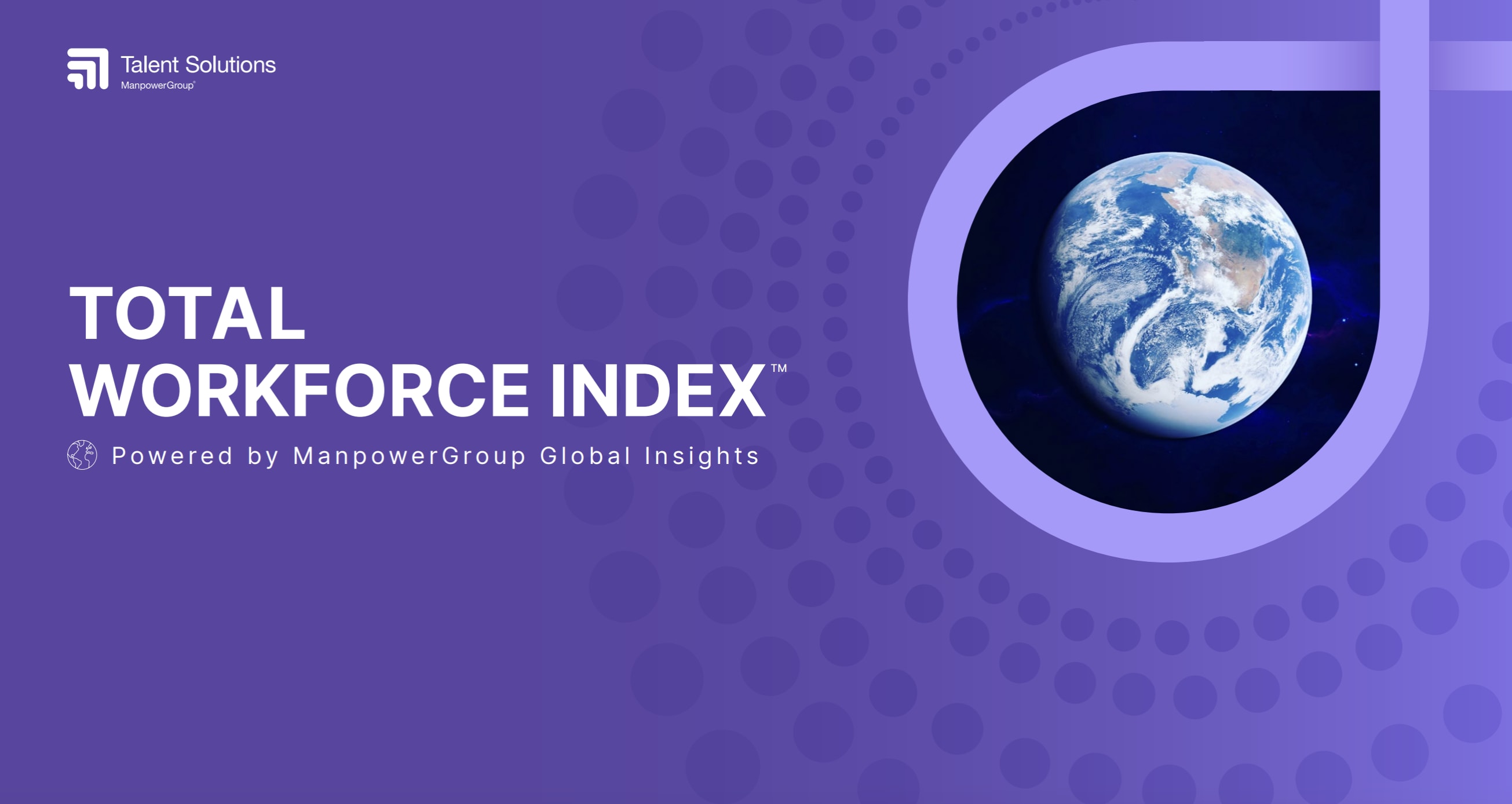Total Workforce Index 2024: Mapping the Currents of Global Talent
In today's rapidly evolving business landscape, understanding global workforce trends is more crucial than ever. Whether you're a business leader, HR professional, or simply interested in the future of work, the insights from ManpowerGroup Talent Solutions' 2024 Total Workforce Index™ (TWI) offer valuable guidance for navigating these choppy waters.
As we delve into the latest findings, we'll explore how technological advancements, geopolitical shifts, and changing workforce dynamics are reshaping the global employment market. The TWI serves as a compass, helping organizations make informed decisions in an increasingly unpredictable world.
What's New in 2024?
Planning a workforce strategy without the right insights is akin to setting sail without a map. The TWI aims to provide that map, and this year, it's been enhanced with several new features:
-
AI Readiness: Recognizing the transformative potential of artificial intelligence, the TWI now incorporates measures of countries' AI readiness.
-
Sustainability Focus: With the growing importance of environmental, social, and governance (ESG) factors, we've added metrics to evaluate markets' capacity for a sustainable, low-carbon future.
-
Geopolitical and Climate Risk Assessment: New factors address political stability, potential for conflict, and climate-related risks that could impact economies and businesses.
-
Enhanced Economic Indicators: We've expanded our economic analysis to account for inflation, currency volatility, and the ease of moving funds across markets.
-
Demographic Emphasis: The TWI now places greater emphasis on younger populations, recognizing their crucial role in creating sustainable talent pools.
Let's cast off and explore how these new features illuminate the currents shaping the future of work.
What's Trending?
This year's TWI highlights several key trends steering the course of the global labor market:
-
Technological Tides: The surge of AI and automation is reshaping the workforce landscape, requiring organizations to chart new courses in skill development and workforce planning.
-
Weathering the Talent Shortage: As the global talent pool continues to shrink, organizations must deploy strategic measures to recruit, retain, and upskill their crew.
-
Economic and Geopolitical Crosswinds: Turbulent factors like inflation, political instability, and currency fluctuations are creating choppy waters for workforce investments.
-
Sustainability and AI as New North Stars: Forward-thinking countries are gaining the upper hand by setting their compasses towards environmental sustainability and AI readiness.
The Global Workforce Leaderboard
In the vast ocean of global talent, certain markets stand out as beacons, guiding organizations through the complex currents of workforce management. Here are the top 10 markets, each a strategic port in the journey of global business:
-
United States 🇺🇸
-
Singapore 🇸🇬
-
Canada 🇨🇦
-
Malaysia 🇲🇾
-
Ireland 🇮🇪
-
United Kingdom 🇬🇧
-
United Arab Emirates 🇦🇪
-
Switzerland 🇨🇭
-
Australia 🇦🇺
-
China 🇨🇳
It's worth noting that the United States, Singapore, and Canada have maintained their leading positions for four consecutive years. Much like seasoned Fortune 500 companies consistently outperforming market expectations, these nations have demonstrated remarkable stability and strength across key workforce factors. Their continued dominance speaks to the robustness of their talent ecosystems, regulatory environments, and overall economic health.
Wrapping It Up
In the dynamic world of global talent, informed decision-making isn't just an advantage – it's essential for staying competitive. Ready to chart your course? Explore further at www.mpgtalentsolutions.com/twi. There, you can access in-depth data, request a customized analysis, or consult with our experts to optimize your workforce strategy. Let the TWI be your guide to smoother sailing in the complex seas of workforce management.
